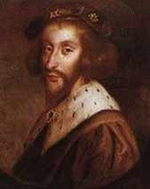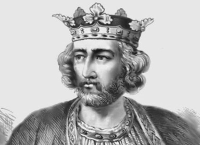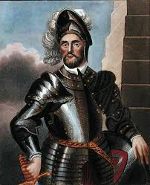Scotland: the Great Cause
Scottish succession had been stable for the much of the 12th and 13th Centuries. Such was not the case in 1286, when King Alexander III died. 
Alexander had ruled for nearly 40 years, becoming the first Scottish monarch to bring the Western Isles into the fold and enjoying a good relationship with England, something many of his predecessors could not say. He had become the father of two sons while king. Both of those boys (and their mother) had died before Alexander had, and his new wife had yet to give birth to a child. Alexander died suddenly, leaving behind only the slimmest of possibilities of an heir–his granddaughter, who was 4. The Scottish Parliament, meeting in April 1286, decided to accept this granddaughter, Margaret, known as the Maid of Norway, as heir to the throne and eventually sent for her. Parliament also appointed six Guardians of Scotland, to act in the new queen's interests, including in finding her a husband. Also in the mix at this point was England's King Edward I, who was Alexander III's brother-in-law and wanted Margaret to marry his son, also named Edward. The Scottish Guardians decided that Margaret and Edward would make a good match and sent for the girl, in 1290. She died on the voyage, creating crisis anew. Into this power vacuum stepped no less than 13 men, with varying claims to the throne. The two most powerful were John Balliol and Robert Bruce.  No one noble was able to convince enough of the others to support him as King of Scotland. The nobles appealed to Edward to decide. He arrived at Norham, in northern England, in May 1291. Edward and the Scottish nobility had agreed to the Treaty of Birgham, which guaranteed the sovereignty of Scotland even though their queen was to be married to an English prince. Another of the terms of that treaty was that no meeting of the Scottish Parliament would take place outside Scotland. Edward convinced the nobles of his good intentions, and they arrived in Norham. Right away, Edward pressed home his assertion that he was the equivalent of an overlord to Scotland, based on an earlier treaty between Richard I of England and Scotland's King William the Lion. The competing nature of the claims of the various nobles prevented a unified response to this assertion, Edward threatened to back up his claim with military force if need be, and the proceedings stopped cold. Things got back on track when the nobles and Edward agreed on a compromise: he would remove his claim that Scotland should pay him homage if the new king would agree to do so himself. It was a technicality that Robert Bruce, at least, was willing to accept. The other nobles followed suit, and the proceedings continued, with Edward clearly in charge. Of the 13 men who claimed their right to succeed Alexander III as King of Scotland, five had legitimate claims, meaning that their ancestry could be traced through children of married nobility. Those five were these:
The other eight claimants included King Eric of Norway, the father of Queen Margaret and Alexander's son-in-law, and seven other nobles whose ancestry included at least one instance of illegitimate birth. 
The committee set up to decide who was to be the Scottish king had 105 members. Edward chose 24 and allowed Balliol and Bruce to choose 40 each. The one with the most power, of course, was Edward. The committee of 105, guided by Edward, eventually agreed with Balliol that, as the descendent of the oldest child of a brother of a monarch, he had the closest thing to a legitimate claim. The committee named Balliol (left) as the next King of Scotland, on November 17, 1292. He was crowned on November 30 in Scone. See also Early Medieval Scottish rulers. |
|
Social Studies for Kids
copyright 2002–2026
David White




